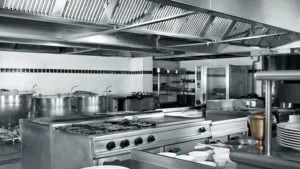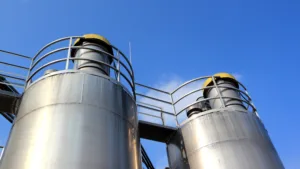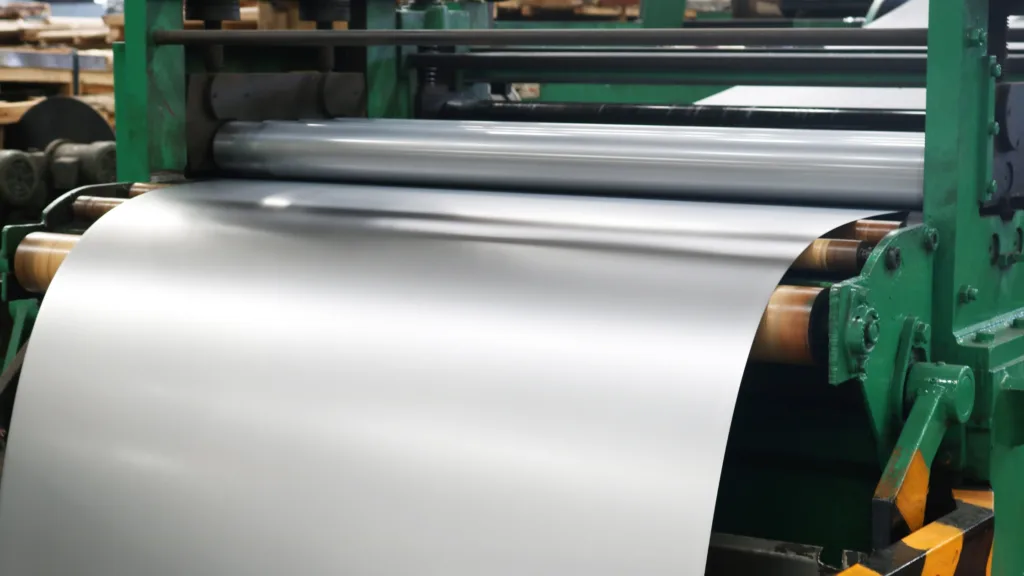When choosing a stainless steel sheet for a project, understanding the difference between thicknesses like 2mm, 3mm, and 5mm can be the key to getting the right balance of strength, weight, cost, and application suitability. Whether you’re fabricating food processing equipment, designing architectural features, or working in industrial construction, the thickness of your stainless sheet directly impacts performance and durability.
In this stainless sheet thickness guide, we break down how each option compares and how to choose the right one for your project’s needs.
What is the Standard Thickness of Sheet Metal in Australia?
In Australia, stainless steel sheet thickness is typically measured in millimetres (mm), using the metric system rather than the gauge system more common in the US. While some manufacturers and international suppliers still reference sheet metal gauge charts, local fabricators and buyers usually rely on direct mm measurements for clarity.
Common thicknesses include:
- 0.55mm, 0.9mm, 1.2mm, and 1.5mm for light-duty applications
- 2mm and 3mm for medium-duty fabrication
- 4mm, 5mm and above for heavy-duty or structural use
At Midway Metals, we stock a wide range of stainless steel sheet sizes and thicknesses to suit everything from wall cladding and decorative panels to high-strength structural components.
Explore Our Stainless Steel Products
The Difference Between Stainless Sheets: 2mm vs 3mm vs 5mm
Understanding the performance and application differences between 2mm, 3mm, and 5mm sheets helps in selecting the most suitable product for your project.
2mm Stainless Steel Sheet
Best for: Lightweight fabrication, decorative use, and architectural applications
2mm stainless sheet is a popular middle ground for projects needing more strength than thinner material without the weight and cost of thicker material. It’s commonly used in:
- Wall panels
- Light-duty equipment enclosures
- Splashbacks and benches
- General food processing environments
Its smooth surface, corrosion resistance, and workability make it ideal for both commercial and residential projects.

3mm Stainless Steel Sheet
Best for: Industrial equipment, kitchen fabrication, and structural applications
A 3mm stainless steel sheet offers greater strength, impact resistance, and stiffness than 2mm, making it suitable for medium-duty industrial use. It performs well under stress and can handle moderate wear and tear. Common uses include:
- Food processing equipment
- Cabinetry and benchtops in commercial kitchens
- Structural framing
- Machine components and tanks
How strong is a 3mm stainless steel sheet?
While strength depends on the grade, a 3mm sheet of 304 or 316 stainless steel typically withstands more bending and deformation than thinner sheets. It’s strong enough for welded assemblies and weight-bearing applications.

5mm Stainless Steel Sheet
Best for: Heavy-duty structural work, marine and chemical environments, and high-load equipment
At 5mm thickness, stainless sheet behaves more like plate steel than flexible sheet metal. It’s designed for tough environments where rigidity, corrosion resistance, and load-bearing strength are essential. Applications include:
- Marine vessels and offshore structures
- Tanks for chemical processing
- Structural frameworks
- Heavy industrial machinery
Because of its thickness, a 5mm sheet often requires more specialised cutting and forming tools and may increase project cost due to material weight and handling requirements.

Here’s a quick summary of the information above to help you decide:
| Thickness | Best For | Strength | Notes |
| 2mm | Decorative, architectural, light-duty | Medium | Lightweight and easy to fabricate |
| 3mm | Industrial, commercial, structural | High | Stronger, suitable for welding |
| 5mm | Heavy-duty, marine, chemical | Very High | Requires specialised processing |
How Processing and Finish Vary by Sheet Thickness
When selecting between 2mm, 3mm, and 5mm stainless steel sheets, it’s not just about thickness. How the sheet is processed and finished also impacts performance, cost, and suitability for your project.
Cold Rolled vs Hot Rolled: Why It Matters
- 2mm and 3mm sheets are typically cold rolled, giving them a smooth surface, tighter tolerances, and consistent thickness. These sheets are ideal for:
- Commercial kitchens where hygiene and appearance matter
- Architectural applications like cladding or feature panels
- Food processing equipment that requires clean, corrosion-resistant surfaces
- 5mm sheets are often hot rolled, especially in larger formats. They may have a rougher mill finish but are:
- More cost-effective for industrial or structural work
- Easier to weld and cut for heavy-duty fabrication
- Common in marine, chemical, and construction sectors
What Finish Should You Choose?
- If you need a clean, polished look for visible or hygienic surfaces, 2mm or 3mm sheets with a polished finish are ideal.
- If you’re building frames, platforms, or tanks and appearance isn’t critical, 5mm sheets with a mill finish are often sufficient and more budget-friendly.
Understanding how thickness and processing work together ensures you specify the right stainless sheet from the start to save time, cost, and rework down the track.
Explore Our Stainless Steel Processing

Which is thicker, 20 or 22 gauge stainless steel?
For background, Australia uses millimetres to define sheet thickness, while gauge is an older imperial system still used globally. This is a common question we get from clients, so to answer that here’s a quick comparison:
- 20 gauge stainless steel: 0.9mm
- 22 gauge stainless steel: 0.7mm
So, 20 gauge is thicker than 22 gauge.
For precision and consistency, especially in industrial and architectural projects, mm-based sizing is preferred.
What Makes One Stainless Steel Sheet Stronger Than Another?
Stainless steel sheet strength depends on both thickness and grade.
- 304 stainless steel is the most common grade used in fabrication. It offers excellent corrosion resistance, strength, and affordability.
- 316 stainless steel provides greater protection in corrosive environments such as marine or chemical processing.
Is 304 or 316 stainless steel stronger?
Technically, 316 offers a slight edge in strength and superior corrosion resistance, but for general applications, both are suitable. Choose based on environment and durability needs.
Learn more about the difference between 304 and 316 stainless steel in this detailed guide.
What is the Price of a 3mm Stainless Steel Sheet?
Prices for stainless steel sheets vary depending on:
- Grade (304 vs 316)
- Finish (mill finish, brushed,polished or mirror)
- Quantity ordered
- Market metal prices
For the most accurate pricing, we recommend contacting Midway Metals for a quote.
Need Help Finding the Right Sheet Thickness?
Whether you’re weighing up 2mm vs 3mm for a commercial kitchen fitout or need a heavy-duty 5mm stainless sheet for structural work, getting the thickness right from the start can save time, cost, and rework.
At Midway Metals, we supply a wide range of stainless steel sheet thicknesses that are ready to cut, process, and deliver Australia-wide. Our team works closely with fabricators, engineers, and project managers to recommend the best product for every application.
Need a quote or expert advice? Contact us today to speak with our stainless specialists.
